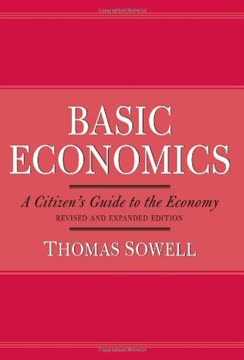Key Takeaways
1. Scientific Advertising: Establish Principles Through Testing
"The time has come when advertising has in some hands reached the status of a science. It is based on fixed principles and is reasonably exact. The causes and effects have been analyzed until they are well understood."
Test and measure. Successful advertising is not based on guesswork or creativity alone, but on rigorous testing and analysis of results. By comparing different approaches and measuring their effectiveness, advertisers can establish fixed principles that consistently deliver results.
- Key elements to test:
- Headlines
- Copy length and style
- Offers and calls-to-action
- Visual elements
Track everything. Use keyed ads and coupons to trace responses and sales back to specific advertisements. This data allows you to calculate the cost per customer acquisition and return on investment for each campaign, guiding future decisions.
Evolve continuously. As markets and consumer behaviors change, continue testing to refine your approach. What worked yesterday may not work tomorrow, so stay vigilant and adaptable.
2. Effective Advertising is Salesmanship in Print
"Treat it as a salesman. Force it to justify itself. Compare it with other salesmen. Figure its cost and result. Accept no excuses which good salesmen do not make."
Adopt a salesperson's mindset. When crafting advertisements, imagine you're speaking directly to a potential customer. Your goal is not to entertain or impress, but to persuade and sell.
- Key qualities of good salesmanship in advertising:
- Clear, concise language
- Focus on customer benefits
- Addressing objections
- Strong call-to-action
Measure advertising like sales performance. Just as you would evaluate a salesperson based on their results, judge your advertisements by their ability to generate leads and sales. Don't be swayed by creative awards or personal preferences – let the numbers speak for themselves.
3. Offer Service, Not Self-Interest
"Remember that the people you address are selfish, as we all are. They care nothing about your interest or your profit. They seek service for themselves."
Focus on the customer's needs. Instead of boasting about your company or product, demonstrate how you can solve the customer's problems or improve their life. This customer-centric approach is far more compelling than self-promotion.
- Ways to emphasize service:
- Highlight product benefits, not just features
- Offer free trials or samples
- Provide valuable information or tools
- Demonstrate your expertise and willingness to help
Create value before asking for the sale. By offering something of value upfront, you build trust and reciprocity, making the customer more likely to engage with your brand and ultimately make a purchase.
4. Learn from Mail Order Advertising
"Mail order advertising tells a complete story if the purpose is to make an immediate sale. You see no limitations there on amount of copy."
Study successful mail order ads. These advertisements must generate direct sales to be profitable, making them excellent models of effective copywriting and offer structure.
Key lessons from mail order advertising:
- Use long-form copy to tell a complete story
- Include specific details and proof points
- Make a clear and compelling offer
- Use coupons or other response mechanisms
Apply mail order principles broadly. While not all advertising aims for immediate sales, the direct and persuasive techniques of mail order can improve the effectiveness of brand-building and awareness campaigns as well.
5. Craft Compelling Headlines to Target Your Audience
"The purpose of a headline is to pick out people you can interest. You wish to talk to someone in a crowd. So the first thing you say is, 'Hey there, Bill Jones' to get the right person's attention."
Grab attention selectively. Your headline should act as a filter, attracting your ideal prospects while allowing others to pass by. This targeted approach ensures you're not wasting resources on uninterested parties.
Elements of effective headlines:
- Speak directly to your target audience
- Promise a specific benefit or solution
- Arouse curiosity or offer news
- Use power words that evoke emotion
Test multiple headlines. The headline is often the most important element of your advertisement. Experiment with different approaches to find what resonates best with your audience.
6. Understand Consumer Psychology to Drive Action
"Human nature is perpetual. In most respects it is the same today as in the time of Caesar. So the principles of psychology are fixed and enduring. You will never need to unlearn what you learn about them."
Leverage timeless psychological principles. While products and markets change, human nature remains largely constant. Understanding and applying psychological triggers can significantly boost the effectiveness of your advertising.
Key psychological principles to apply:
- Reciprocity: Offer something of value to encourage reciprocation
- Social proof: Show that others are using and benefiting from your product
- Scarcity: Create a sense of urgency or limited availability
- Authority: Demonstrate expertise or get endorsements from respected figures
Appeal to emotions and rationalize with logic. Most purchasing decisions are driven by emotion, then justified with logic. Craft your messaging to engage both the heart and the mind of your audience.
7. Be Specific and Factual in Your Claims
"Platitudes and generalities roll off the human understanding like water from a duck. They leave no impression whatever."
Use concrete facts and figures. Vague claims like "best quality" or "superior service" are easily ignored. Instead, provide specific, measurable benefits that set your product apart.
Examples of specific claims:
- "Reduces energy consumption by 27%"
- "Saves the average user 3 hours per week"
- "Trusted by over 10,000 businesses worldwide"
Back up your claims with evidence. Whenever possible, support your statements with data, testimonials, or third-party validation. This builds credibility and helps overcome skepticism.
8. Tell Your Full Story in Every Ad
"Whatever claim you use to gain attention, the advertisement should tell a story reasonably complete."
Don't assume multiple exposures. While you may plan a series of ads, each individual advertisement should stand on its own. Assume that this may be your only chance to convince the reader.
Elements of a complete advertising story:
- Clear explanation of the product or service
- Unique selling proposition (USP)
- Key benefits and features
- Proof points or testimonials
- Call-to-action
Balance comprehensiveness with readability. While you want to include all essential information, avoid overwhelming the reader. Use clear organization, subheadings, and visual elements to make the ad easy to scan and digest.
9. Use Art and Pictures Strategically
"Pictures should not be used merely because they are interesting. Or to attract attention. Or to decorate an ad. We have covered these points elsewhere. Ads are not written to interest, please or amuse."
Make visuals work hard. Every image in your advertisement should serve a specific purpose, whether it's demonstrating the product, illustrating a benefit, or evoking an emotional response.
Effective uses of visuals in advertising:
- Show the product in use
- Before and after comparisons
- Diagrams explaining how the product works
- Portraits of satisfied customers
Balance art and copy. While striking visuals can grab attention, ensure they don't overshadow or contradict your message. The art and copy should work together harmoniously to convey your key points.
10. Avoid Costly Mistakes by Knowing Your Market
"There are some things we know of which might possibly be sold to half the homes in the country. A Dakin-fluid germicide, for instance. But the consumption would be very small. A small bottle might last for years. Customers might cost $1.50 each. And the revenue per customer might not in ten years repay the cost of getting."
Calculate customer lifetime value. Before launching a major advertising campaign, estimate how much a typical customer is worth to your business over time. This helps determine how much you can afford to spend on customer acquisition.
Factors to consider in market analysis:
- Market size and potential reach
- Average purchase value and frequency
- Customer retention rates
- Competitors and substitutes
Identify and focus on profitable segments. Not all potential customers are equally valuable. Concentrate your efforts on the segments that offer the best return on your advertising investment.
11. Gather Comprehensive Information Before Advertising
"An advertiser, to have a chance at success, must gain full information on his subject. The library of an advertising agency should have books on every line that calls for research. A painstaking advertising man will often read for weeks on some problem which comes up."
Become an expert on your product and market. Thorough research not only helps you create more compelling advertisements but also helps you identify unique selling points and opportunities that your competitors might miss.
Areas to research:
- Product features and benefits
- Target audience demographics and psychographics
- Competitive landscape
- Industry trends and regulations
Leverage multiple information sources. Combine data from market research, customer surveys, sales data, and industry reports to build a comprehensive understanding of your advertising challenge.
12. Develop a Strategic Approach to Advertising Campaigns
"Advertising is much like war, minus the venom. Or much, if you prefer, like a game of chess. We are usually out to capture others' citadels or garner others' trade."
Plan your campaign like a military operation. Develop a clear strategy, identify your objectives, assess your resources, and anticipate potential obstacles and competitor responses.
Key elements of an advertising strategy:
- Clear definition of target audience
- Unique selling proposition (USP)
- Key messages and brand positioning
- Media selection and budget allocation
- Metrics for measuring success
Remain flexible and adaptive. While having a solid plan is crucial, be prepared to adjust your strategy based on market feedback and campaign performance. Continual optimization is key to long-term advertising success.
Last updated:
FAQ
What's "My Life in Advertising and Scientific Advertising" about?
- Dual Focus: The book is a combination of Claude C. Hopkins' autobiography and his insights into advertising principles. It provides a personal narrative of his career and a detailed guide on effective advertising strategies.
- Advertising Evolution: It explores the evolution of advertising from a speculative venture to a science based on fixed principles and tested methods.
- Salesmanship in Print: Hopkins emphasizes that advertising is essentially salesmanship in print, requiring the same principles and strategies as personal selling.
- Practical Examples: The book is filled with real-life examples and case studies from Hopkins' career, illustrating the application of his advertising principles.
Why should I read "My Life in Advertising and Scientific Advertising"?
- Historical Insight: The book offers a historical perspective on the development of advertising as a profession and its transformation into a scientific discipline.
- Proven Strategies: Hopkins shares proven advertising strategies that have stood the test of time, making it a valuable resource for marketers and advertisers.
- Personal Success Story: It provides an inspiring account of Hopkins' journey from humble beginnings to becoming a pioneer in the advertising industry.
- Timeless Principles: The principles discussed are timeless and applicable to modern advertising, making it relevant for today's marketers.
What are the key takeaways of "My Life in Advertising and Scientific Advertising"?
- Scientific Approach: Advertising should be approached scientifically, with a focus on tested and proven methods rather than guesswork.
- Salesmanship: Effective advertising is akin to personal salesmanship, requiring a deep understanding of consumer psychology and behavior.
- Consumer Focus: Successful advertising focuses on the consumer's needs and desires, offering solutions and benefits rather than just promoting a product.
- Testing and Measurement: Continuous testing and measurement of advertising efforts are crucial to understanding what works and optimizing campaigns for better results.
What are the best quotes from "My Life in Advertising and Scientific Advertising" and what do they mean?
- "Advertising is salesmanship.": This quote underscores the idea that advertising should be treated as a form of salesmanship, with the same principles and objectives.
- "The more you tell, the more you sell.": Hopkins emphasizes the importance of providing comprehensive information to potential customers to facilitate informed purchasing decisions.
- "People can be coaxed but not driven.": This highlights the need for advertising to persuade and appeal to consumers rather than force or pressure them into buying.
- "The only purpose of advertising is to make sales.": This quote reinforces the idea that the ultimate goal of advertising is to generate sales and revenue.
How does Claude C. Hopkins define "Scientific Advertising"?
- Fixed Principles: Scientific advertising is based on fixed principles and tested methods, moving away from speculative approaches.
- Data-Driven: It involves using data and results from previous campaigns to inform future advertising strategies and decisions.
- Consumer-Centric: The approach focuses on understanding consumer behavior and preferences to create more effective advertising messages.
- Continuous Improvement: Scientific advertising emphasizes the importance of continuous testing and refinement to optimize advertising efforts.
What is the significance of "Salesmanship in Print" in Hopkins' work?
- Core Concept: "Salesmanship in Print" is a core concept in Hopkins' work, highlighting the idea that advertising should replicate the principles of personal selling.
- Consumer Engagement: It involves engaging consumers with compelling messages that address their needs and desires, much like a personal sales pitch.
- Persuasive Communication: The approach focuses on persuasive communication, using language and visuals to influence consumer behavior.
- Result-Oriented: "Salesmanship in Print" is result-oriented, aiming to convert advertising efforts into tangible sales and customer acquisition.
How does Hopkins suggest using "Headlines" effectively in advertising?
- Attention-Grabbing: Headlines should be designed to grab the attention of the target audience and entice them to read further.
- Relevance: They must be relevant to the product or service being advertised and resonate with the consumer's interests and needs.
- Testing: Hopkins advocates for testing different headlines to determine which ones generate the best response and engagement.
- Clarity and Specificity: Effective headlines are clear and specific, providing a concise summary of the ad's main message or offer.
What role does "Psychology" play in Hopkins' advertising strategies?
- Understanding Behavior: Psychology is crucial for understanding consumer behavior and crafting messages that resonate with their emotions and motivations.
- Curiosity and Interest: Hopkins emphasizes the use of curiosity and interest as psychological triggers to engage consumers and encourage them to learn more.
- Avoiding Negativity: He advises against using negative appeals, focusing instead on positive outcomes and benefits to attract consumers.
- Building Trust: Psychological principles are used to build trust and credibility, making consumers more likely to respond positively to advertising messages.
How does Hopkins view the use of "Samples" in advertising?
- Effective Tool: Samples are seen as an effective tool for introducing products to consumers and encouraging trial and adoption.
- Cost-Effective: Despite the initial cost, samples can be a cost-effective way to generate interest and drive sales by allowing consumers to experience the product firsthand.
- Targeted Distribution: Hopkins suggests distributing samples to interested consumers who have shown a willingness to try the product, rather than indiscriminately.
- Follow-Up: He emphasizes the importance of following up with consumers who receive samples to convert them into loyal customers.
What is Hopkins' approach to "Testing and Measurement" in advertising?
- Essential Practice: Testing and measurement are essential practices in Hopkins' approach to ensure advertising efforts are effective and efficient.
- Data-Driven Decisions: He advocates for making data-driven decisions based on the results of test campaigns and consumer feedback.
- Continuous Optimization: Testing allows for continuous optimization of advertising strategies, leading to improved performance and better ROI.
- Risk Mitigation: By testing on a small scale before launching full campaigns, advertisers can mitigate risks and avoid costly mistakes.
How does Hopkins address "Distribution" challenges in advertising?
- Strategic Planning: Distribution challenges are addressed through strategic planning and coordination with retailers and distributors.
- Local Campaigns: Hopkins suggests starting with local campaigns to build distribution networks before expanding to national advertising.
- Dealer Incentives: He discusses the use of dealer incentives and partnerships to encourage stocking and promotion of advertised products.
- Consumer Demand: Creating consumer demand through effective advertising can drive distribution by motivating retailers to stock the product.
What are some common "Mistakes" in advertising according to Hopkins?
- Lack of Testing: One common mistake is failing to test advertising strategies and messages before full-scale implementation.
- Ignoring Consumer Needs: Advertisers often make the mistake of focusing on their own interests rather than addressing consumer needs and desires.
- Overemphasis on Creativity: Hopkins warns against overemphasizing creativity at the expense of clear and persuasive communication.
- Neglecting Follow-Up: Failing to follow up with interested consumers or those who have received samples can result in missed opportunities for conversion.
Review Summary
My Life in Advertising and Scientific Advertising is highly regarded as a foundational text for advertising and marketing professionals. Readers praise Hopkins' practical advice on testing, measuring results, and focusing on benefits to customers. Many consider it timeless and still relevant today, despite being written nearly a century ago. The book offers valuable insights into consumer psychology and effective copywriting techniques. While some find parts outdated, most agree it's essential reading for anyone in advertising or sales. Hopkins' emphasis on hard work, understanding customers, and data-driven decision-making resonates with many readers.
Similar Books










Download PDF
Download EPUB
.epub digital book format is ideal for reading ebooks on phones, tablets, and e-readers.





